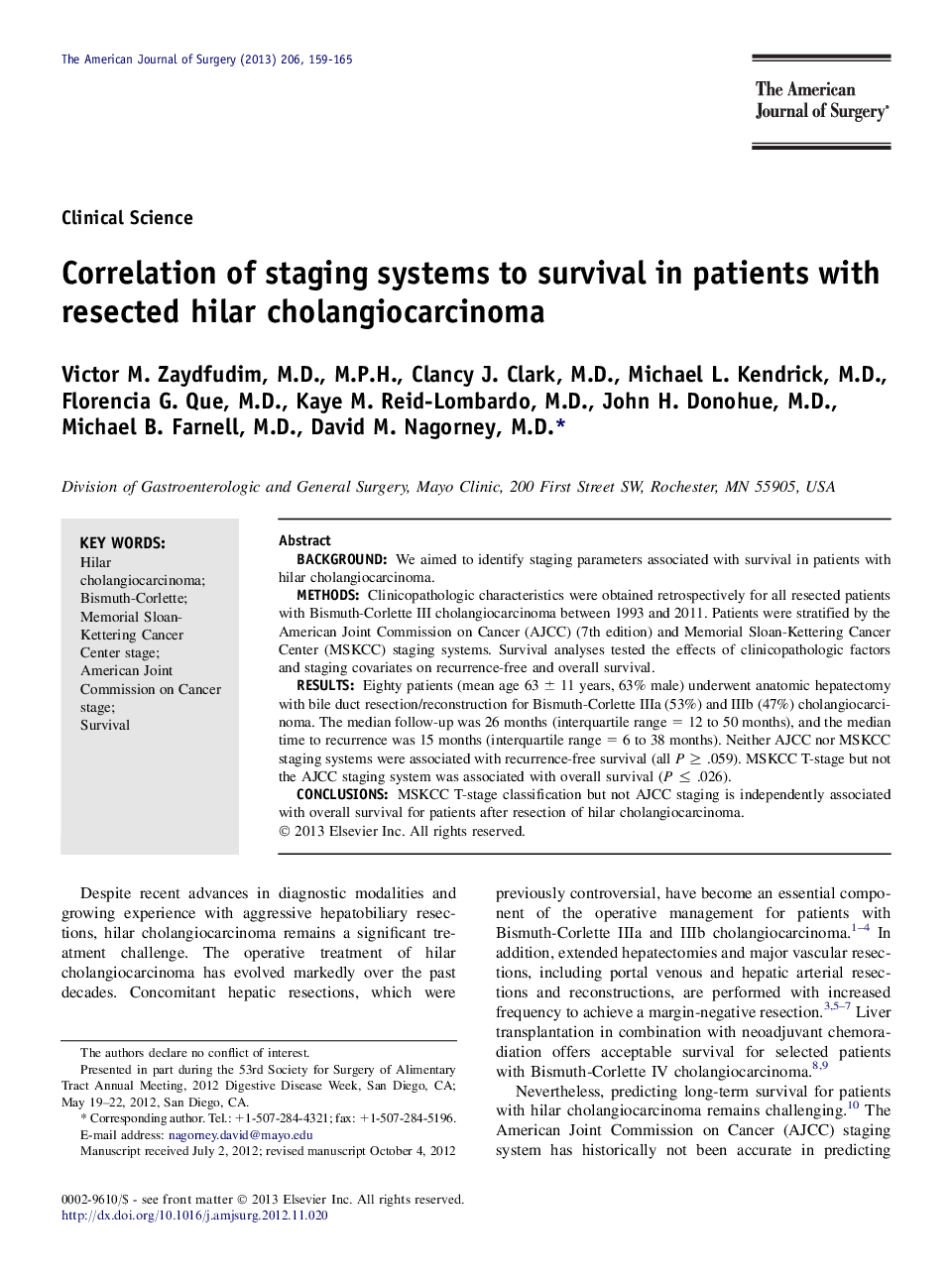| Article ID | Journal | Published Year | Pages | File Type |
|---|---|---|---|---|
| 4279163 | The American Journal of Surgery | 2013 | 7 Pages |
BackgroundWe aimed to identify staging parameters associated with survival in patients with hilar cholangiocarcinoma.MethodsClinicopathologic characteristics were obtained retrospectively for all resected patients with Bismuth-Corlette III cholangiocarcinoma between 1993 and 2011. Patients were stratified by the American Joint Commission on Cancer (AJCC) (7th edition) and Memorial Sloan-Kettering Cancer Center (MSKCC) staging systems. Survival analyses tested the effects of clinicopathologic factors and staging covariates on recurrence-free and overall survival.ResultsEighty patients (mean age 63 ± 11 years, 63% male) underwent anatomic hepatectomy with bile duct resection/reconstruction for Bismuth-Corlette IIIa (53%) and IIIb (47%) cholangiocarcinoma. The median follow-up was 26 months (interquartile range = 12 to 50 months), and the median time to recurrence was 15 months (interquartile range = 6 to 38 months). Neither AJCC nor MSKCC staging systems were associated with recurrence-free survival (all P ≥ .059). MSKCC T-stage but not the AJCC staging system was associated with overall survival (P ≤ .026).ConclusionsMSKCC T-stage classification but not AJCC staging is independently associated with overall survival for patients after resection of hilar cholangiocarcinoma.
